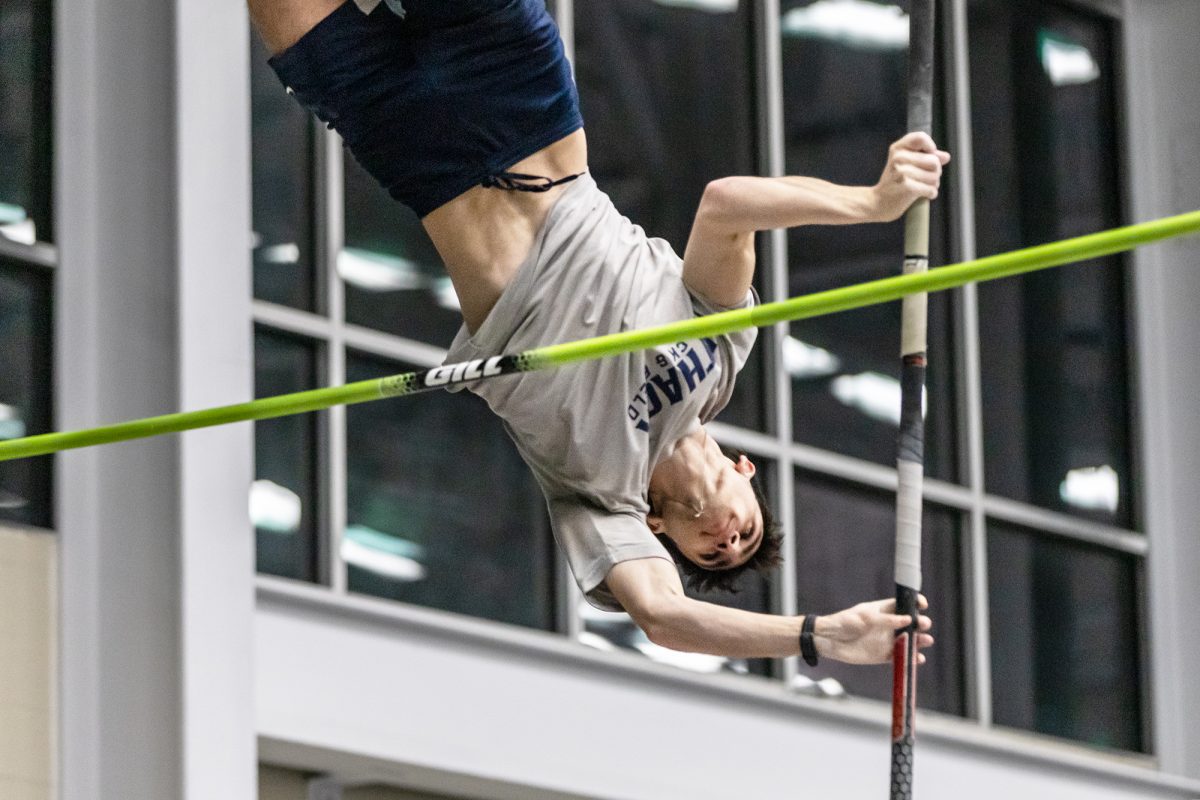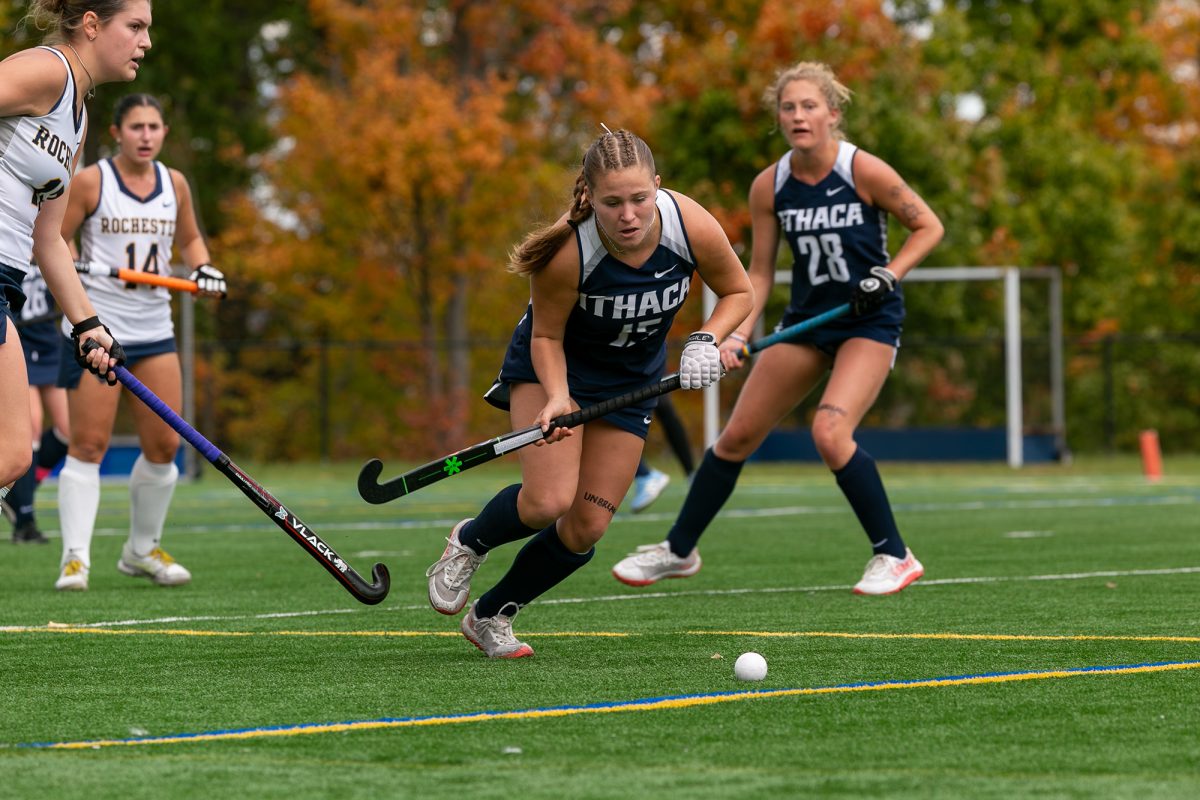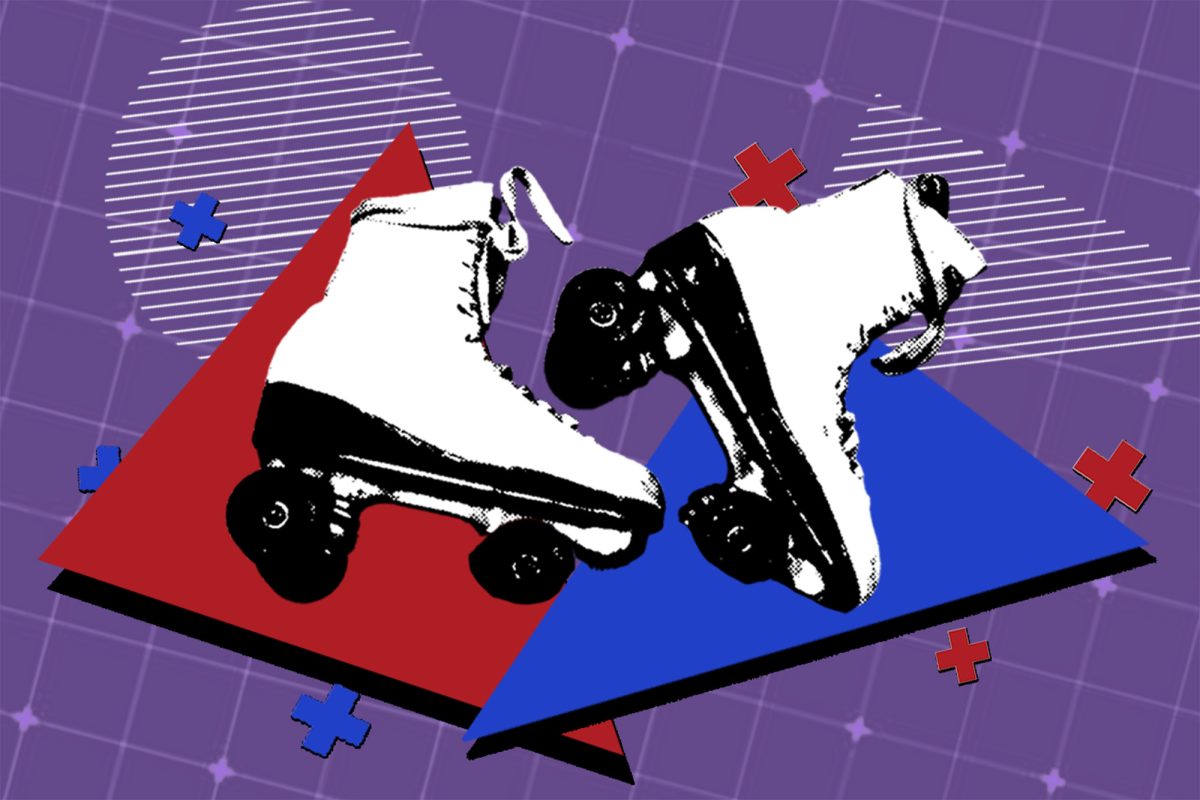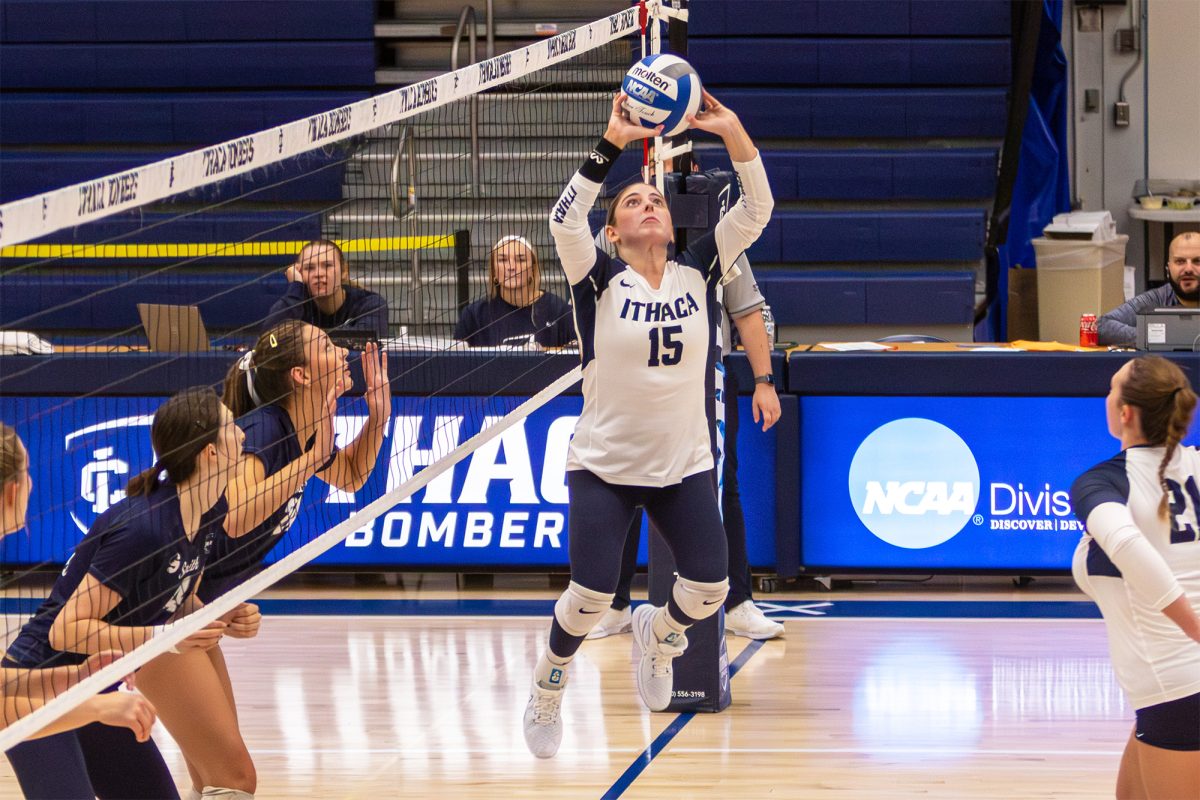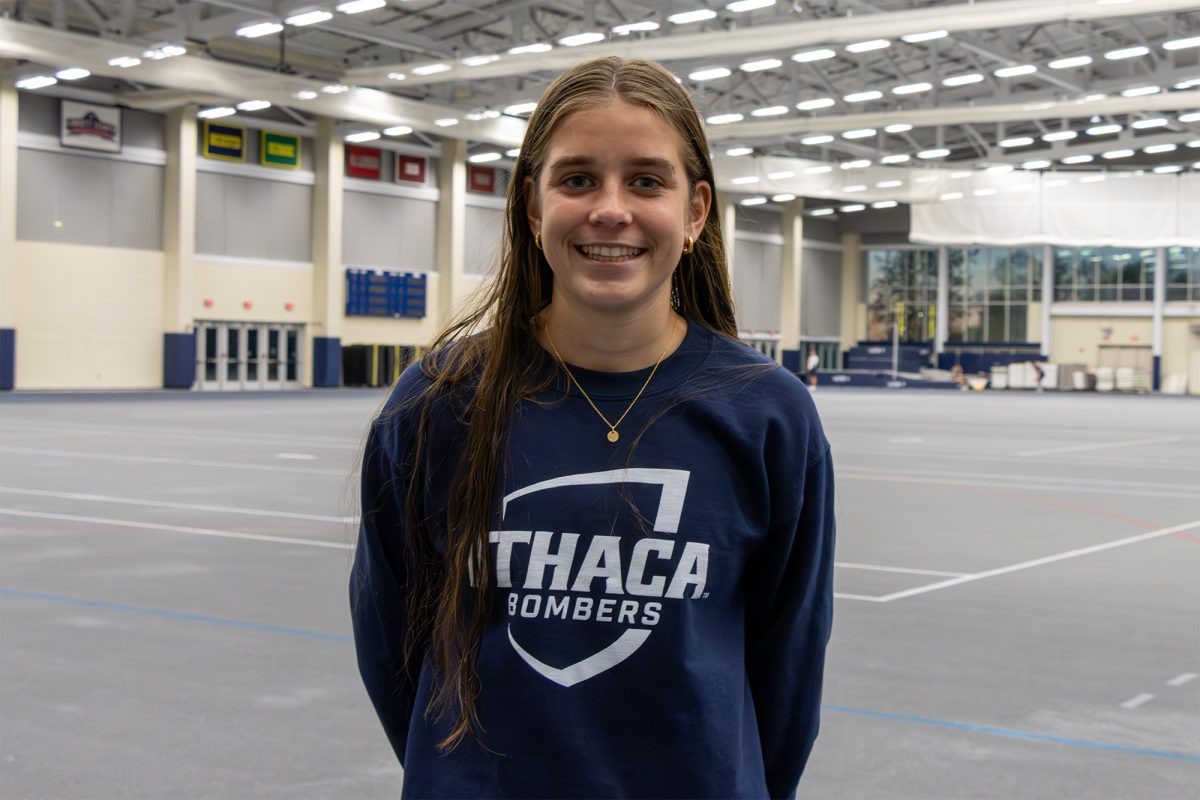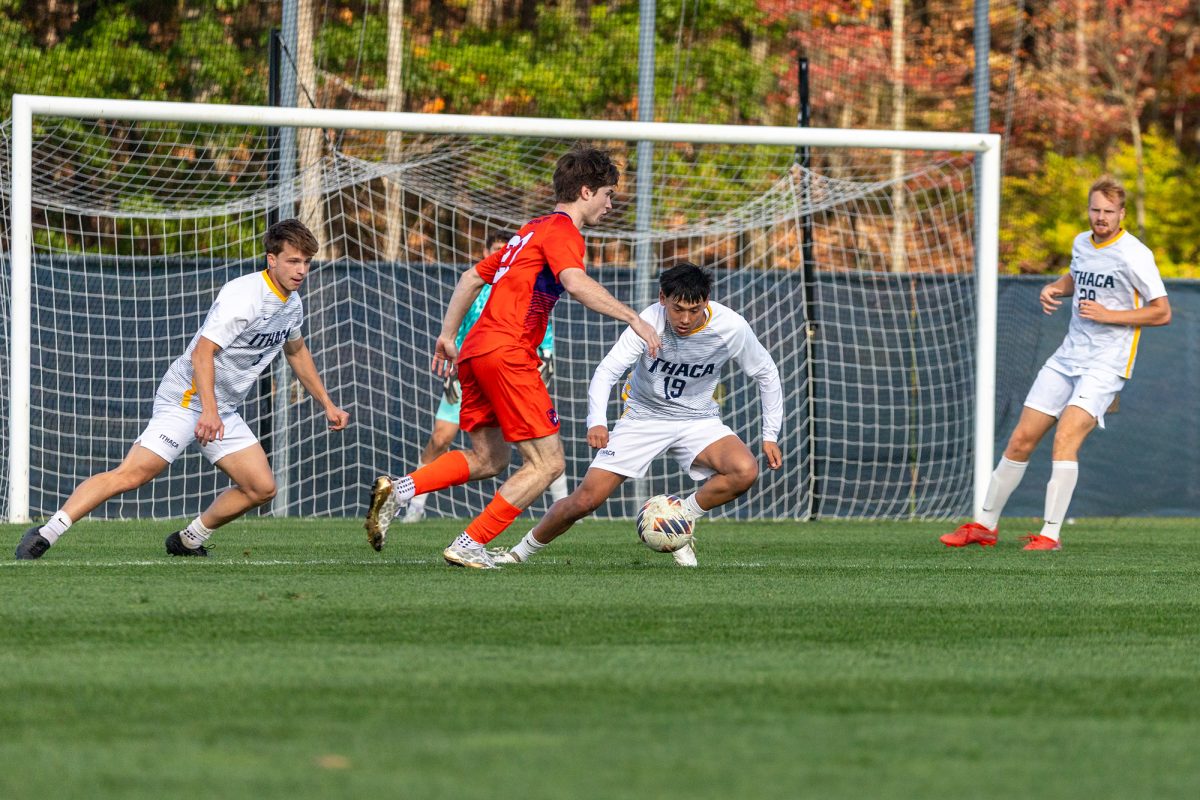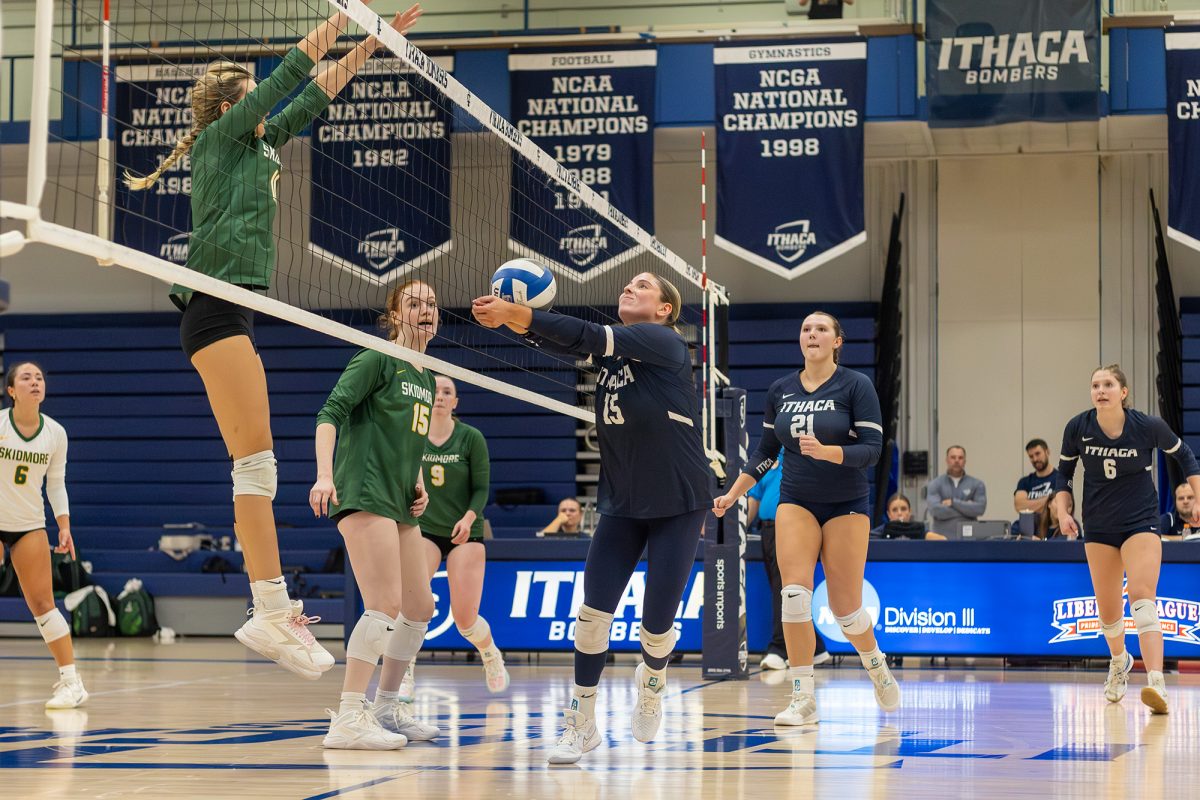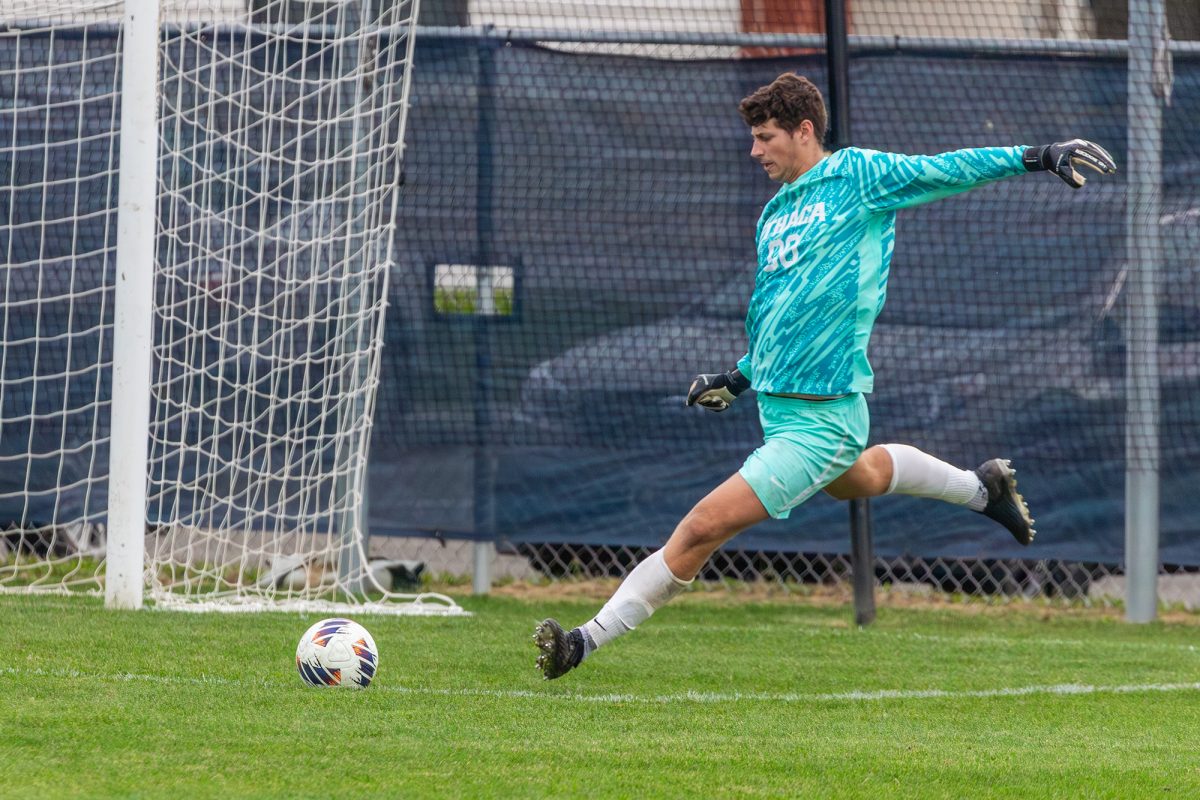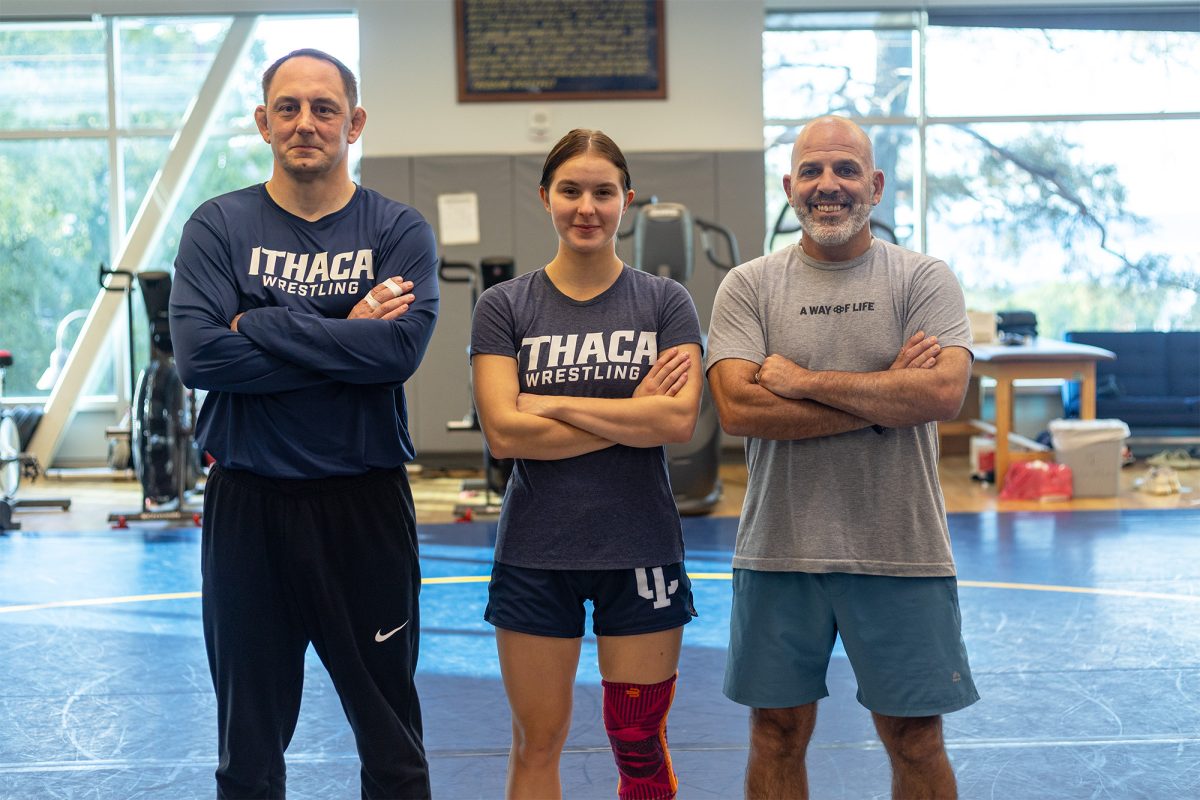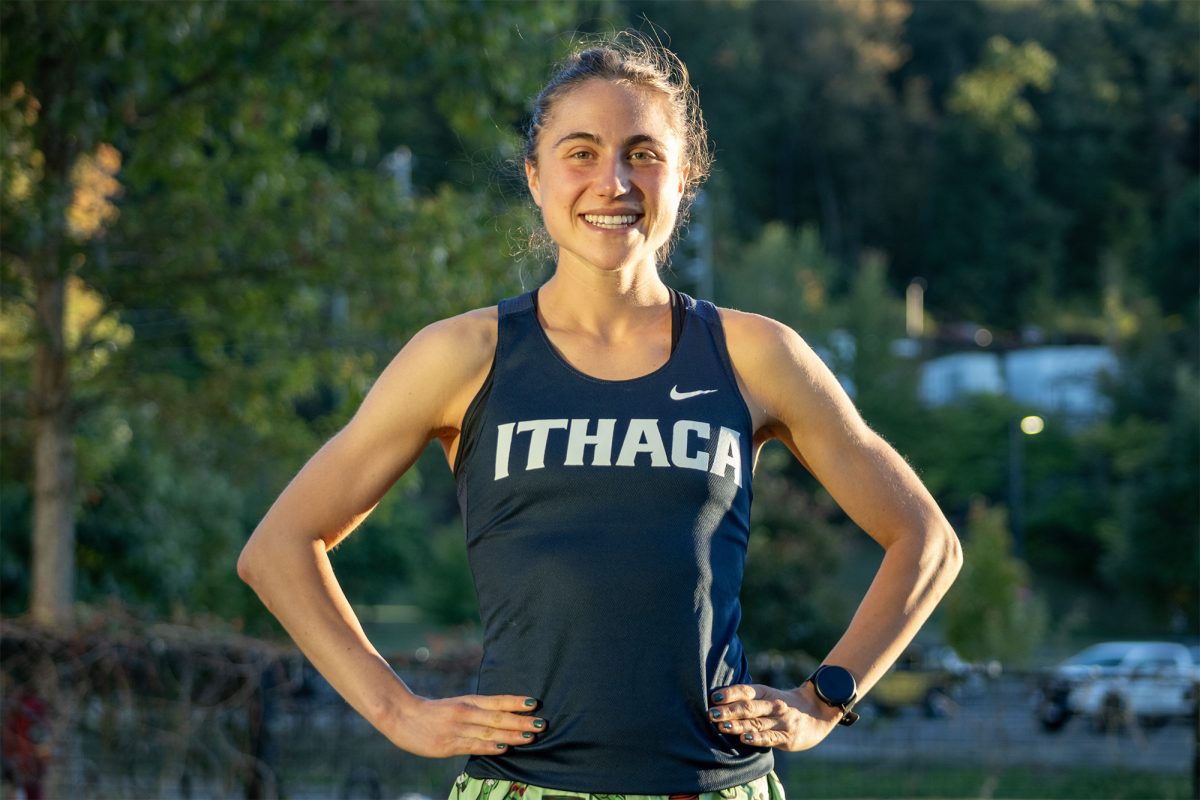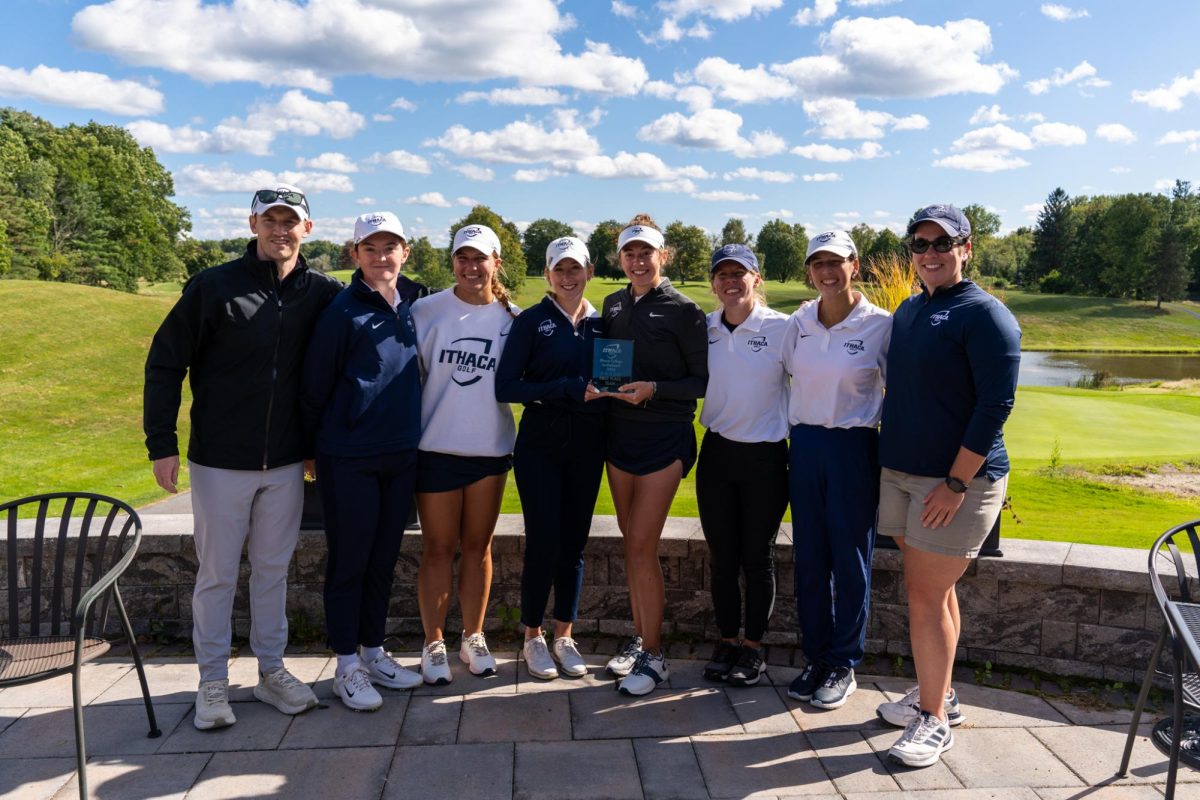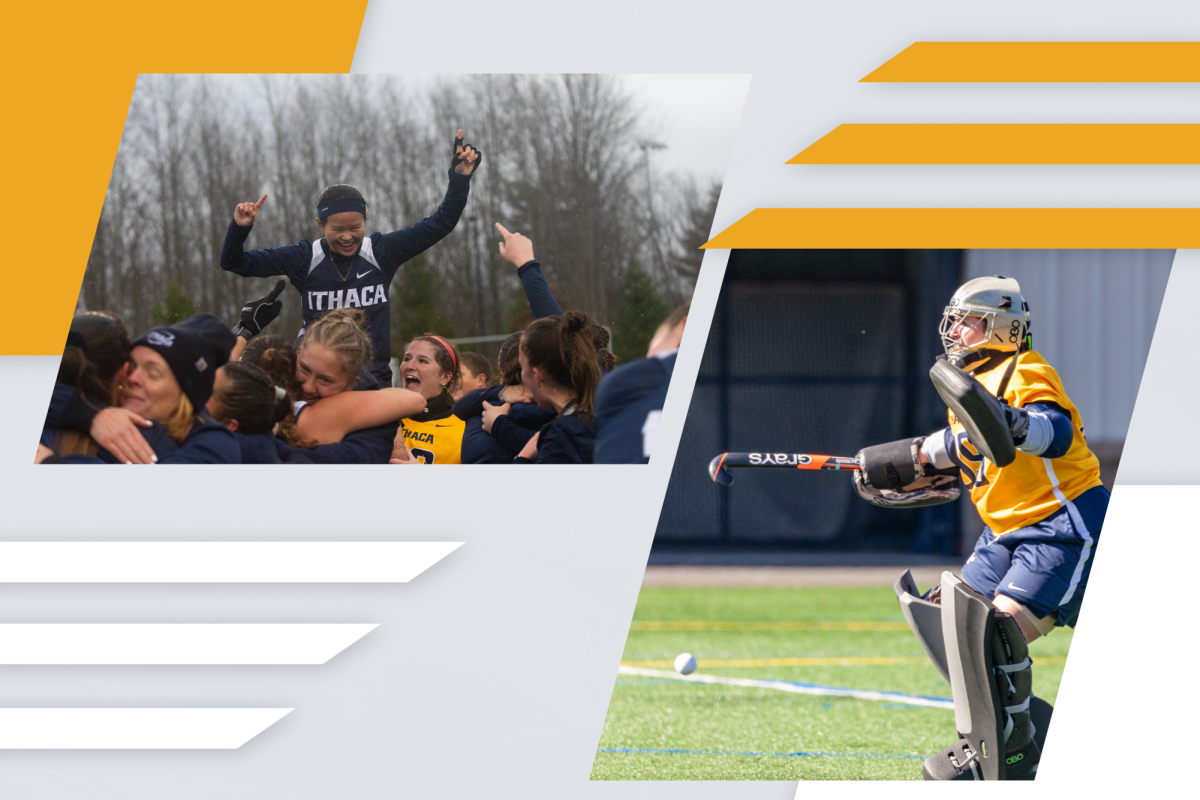During Fall 2023, Ithaca College then-junior pole vaulter Shaun Herlihy was not leaping for glory. Instead, he was just trying to get back on his feet after suffering a torn lisfranc.
During the 2023 season Herlihy gained all-conference and all-regional status, finishing in the top five in both the Liberty League outdoor and indoor championships. This included a PR of 4.76 meters that earned him runner up in the indoor championships. Unfortunately, the regional championships would be Herlihy’s last chance at competing for nearly two years.
Herlihy said he was suffering from a torn ligament in his foot, called a lisfranc injury. The lisfranc stabilizes the foot’s arch and transfers loads from the lower leg down to the toes. Lisfranc injuries are generally rare but are extremely taxing. According to UT Southwestern Medical Center, Only one in 55,000 Americans suffer any type of lisfranc injury each year and according to a study in Orthopaedics and Trauma, lisfranc injuries only account for between 1% and 3% of foot injuries in athletes.
Herlihy said the pain built up over the 2023 season and he finally decided to get it checked out after the outdoor season concluded.
“I would compete on it and then I couldn’t really walk after,” Herlihy said. “I would just sit with ice on it for half an hour and it was just very painful. Then, junior year it was just at a point where if I was just walking around, it was hurting. There was one jump where I felt myself push off my foot and felt everything shoot up and that was when I knew it was time to get surgery.”
Herlihy said he went to five different specialists but none could identify the injury. Finally, Herlihy said he got an MRI from Alec Macauley — a surgeon at Cayuga Orthopedics who specializes in ankle, foot and knee surgeries — and Macauley decided that Herlihy should get surgery. Herlihy said the reality of the situation really hit him post-surgery.
“I kind of felt a little lost, but the week after the surgery was the toughest — the week or two after — just because of the adjustment,” Herlihy said. “The beginning, when they tell you you’re going to be on a scooter for 10 weeks. The first week or two is going to really feel like it’s a year, but as the weeks go on it gets easier.”
During Herlihy’s recovery, he said he had to rely on his teammates and roommates to help him get back and forth from classes and physical therapy sessions. One teammate in particular, junior hurdler and jumper Brett Atkin said he helped a determined Herlihy.
“Sometimes we’d be at the kitchen table and he’d be like ‘Brett, can you get my water bottle from my room?’” Atkin said. “He was very [independent] for a good amount of time. He didn’t really want help, [but] when he needed stuff like that, he would ask me to do it.”
In his recovery, Herlihy said he worked closely with the team’s athletic trainer, Natalie Sharpe, who did not respond to The Ithacan’s request for comment. Sharpe guided Herlihy in a portion of the early stages of his recovery before he was able to begin movement-centered practices that occurred three months later in physical therapy.
During Herlihy’s work with Sharpe, Herlihy worked on joint mobility and ankle strengthening so it would be easier to begin moving around again. Herlihy also underwent blood flow restriction training that restricts 80% of blood flow. This makes it so Herlihy could do reps with his leg with no weight.
While Herlihy was undergoing his recovery he stayed involved with the team by going to as many meets as he could in those 20 months. Atkin said Herlihy would be just as dialed into supporting his teammates, whether he was at home or at the track.
“All of last spring I was out as well, so when there were away meets that were too far, I would go into his room and he had the live results on his double-screen computer,” Atkin said. “He would be looking at [rankings] of people and saying, ‘This guy PR’d today, I should go text them congratulations. This vaulter no-heighted, I should see what’s up with him.’ He’s always looking after everybody, even though he wasn’t there.”
During Herlihy’s recovery, the college’s pole vaulting squad underwent leadership changes. Matt Scheffler, long-time pole vaulting head coach, retired and Herlihy’s former teammate, national champion Dom Mikula ’24 took his place. Mikula, who has been with the Bombers through Herlihy’s recovery, said he had no doubt Herlihy would be back doing what he loves.
“We’ve all had people like, ‘Oh I’m gonna come back from this,’ and they never do but that was never even a thought in my mind just because of how hard he works,” Mikula said. “He’s always with trainers, he’s always practicing, always asking what he can do better.”
After going through preseason with the team and continuing to rehab his foot, Herlihy was finally ready to make his debut Jan. 11 at the Southern Tier Invitational at Cornell University. Herlihy finished sixth with a 3.70-meter jump but has only improved since, finishing runner-up the following week with a 4.15-meter jump.
“[Competing] feels a little different just because of how long of a break I took with the time off, just not being able to pole vault for that long,” Herlihy said. “It was just relearning the pole vault and my run was feeling completely different. … That has been one of the biggest struggles this year, just trying to remember all that, but it’s gotten there.”
Whether it was stepping in to coach drills or sending out encouragement after a meet, Herlihy tried to lead the team whether he could vault or not. With Herlihy finally back out there, he said he is hoping to end his collegiate career performing the best he can. Atkin said Herlihy was determined to get back to that point.
“When you love track as much as Shaun loves track, there was not anything stopping him from pole vaulting again,” Atkin said. “If that doctor said you are never going to pole vault again, he would have pole vaulted again. There’s no doubt in my mind that he would have. That’s just him.”


